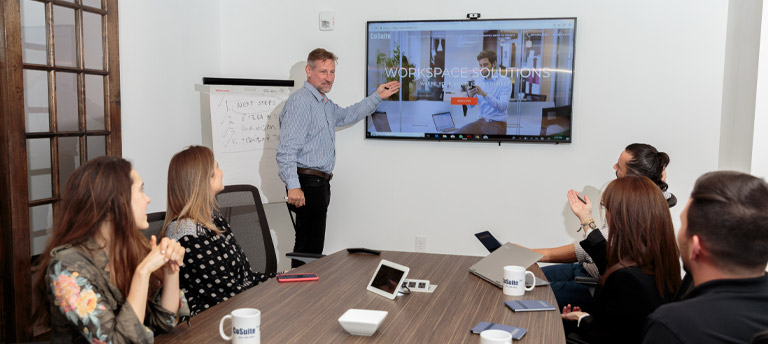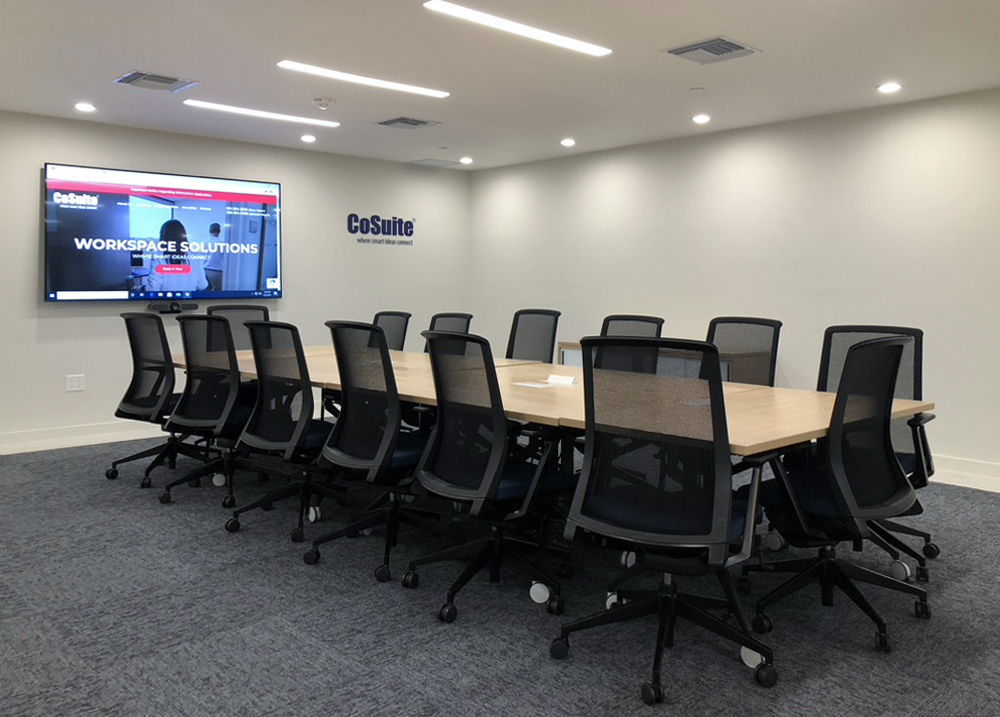
How to Run a Meeting Like a Pro
March 26, 2021
During the pandemic, many businesses learned that their employees could successfully work remotely and that conducting meetings on Zoom, GoTo Meeting, Google Meet, or any of the other wildly popular platforms allowed teams to meet during these isolating times. Now, that the Coronavirus vaccine is propelling the globe towards herd immunity, in most places, employers and employees are eager to schedule in-person meetings even though, team members may be still working from home. In this new business landscape, where businesses and workers can do almost anything remotely and work from anywhere, in-person meetings are still in demand. For one thing, humans are social animals and benefit from connecting. Secondly, something synergistic can occur when humans meet to find solutions to issues. As in, “two heads are better than one” or as in “the sum of the parts is greater than the whole,” in-person meetings initiate collaborative outcomes. With more virtual meetings due to the pandemic and the hope for more in-person meetings happening as businesses reopen, the question that persists in this new and rapidly changing business landscape seems to be: How do you run a meeting efficiently and effectively?

Is this meeting necessary?
The initial questions to ask if you are thinking of conducting an in-person meeting are “Is this meeting necessary?” and “Could you accomplish the same thing by meeting with team members individually, or by circulating proposals and suggested solutions to team members?”
Much of the time, meetings can be circumnavigated but in the current environment when some employees have not seen their business colleagues in-person for roughly a year, meetings are significant, as they reconnect team members to the business environment and help to re-acclimate them to a physical office, separate from their home offices.
How many attendees are essential at your meeting?
With safety guidelines still in place, your potential attendees might be limited by the space where you will be holding your meeting. Flexible, shared office space meeting and conference room rentals are trending high, as a solution for working from home and going into the office. At any rate, according to the Harvard Business Review, as few as 4-6 attendees but no more than 10-12 are suggested for in-person meetings, based on the fact that meetings can get derailed by too many opinions and voices. Traditionally, department heads and project managers will represent their team members in meetings with optional attendees that can catch up later from the minutes of the meeting. Today, some of these attendees might be there in person and some might join virtually. After making the arrangements for your meeting, the way you conduct a meeting can make or break its productivity.
How to run your meeting . . .
Develop an Agenda
Before your meeting, write out an agenda for the meeting and circulate it to inform attendees of the purpose of the meeting. Any pertinent background information should be included with the agenda to save time during the meeting, bringing attendees up to speed. “Determining a specific time frame for your meeting is a good idea.” Or “Identifying…” Open-ended meeting times are not your friend. Attendees like to know how long the meeting is scheduled to last. By scheduling meetings the hour before lunch or an hour before the end of the day, your meeting will have a set ending that offers rewards for your team members. In the first scenario, they get to take a break and eat lunch and in the second, they get to do whatever they want afterward. Your agenda should state the purpose of the meeting and outline the steps that will be taken to arrive at the goal of the meeting. Hosts should alert attendees expected to lead various discussions in advance of the meeting, so they can prepare their discussion points. The order of discussions should be laid out in the agenda so attendees will not bring up points in random order because they are not aware that these points will be covered and addressed at a later point in the meeting.
Starting the meeting
As the meeting host, you should arrive early to set up any materials necessary for your meeting and to ensure any technology you will use during your meeting is working properly – especially if anyone is joining virtually. You should enlist someone to take notes beforehand. Starting your meeting on time is important. Waiting for late attendees is discouraged, as prompt attendees shouldn’t be inconvenienced or encouraged to arrive later, as a result. One way to discourage latecomers is to list the tardy attendees in the meeting’s minutes, as well as the attendees who leave the meeting early. Another way to start your meeting is with refreshments that are strategically located close to those who arrive at the meeting on time.
Discussions
In some circles, keeping discussions on track is a little bit like herding cats. As the host of the meeting, it is your responsibility to guide the discussions to expedient ends. All points of view should be entertained, within reason, as opposing viewpoints have a way of coming to a compromise for the good of the outcome. Keeping the goal in mind, discussions should be considered closed once it’s evident that:
- More information is needed to proceed to a course of action
- Some people key to a discussion are absent
- Team members need more time to digest the subject matter and discuss it with colleagues
- Events surrounding the discussion are in flux and likely to alter the course of action until things settle down
- The subject needs more discussion time than allotted at this meeting
- The group sees that two or three members can settle an issue, outside of the meeting, without taking up everyone else’s time
Include all voices
Research has shown that in most meetings, 2-4 attendees do most of the talking, usually senior members of teams. Some attendees may want to speak but are intimidated or can’t find the right time to jump into the conversation. Assigning talking points to members gets everyone involved in discussions and keeps attendees from tuning out. Still, a good rule of thumb is to ask, at the end of each discussion, before moving to the next item, if anyone else would like to add anything to the discussion.
Actionable goals and decision log
It is important to assign members specific actions at the end of your meetings. If more information is needed, assign a fact-finding task to a particular person or persons, with a specific timeline. Writing up the minutes or decision log helps to remind everyone of what happened at the meeting and what actions to take before the next meeting. The meeting leader writes the minutes for the meeting and these can be short but need to include:
- The meeting time and date, location, and leader’s name
- Attendees’ names and apologies for absences
- Agenda items discussed and decisions reached
- If actions were agreed on, list the name of the people responsible for each assignment and timelines to accomplish these tasks
- Ending time of the meeting
- Date, time, and place of the next meeting
CoSuite’s contemporary, upscale high-tech conference rooms offer everything you need for your next meeting. Whether you’re reconnecting with remote workers or meeting a potential client, CoSuite helps you to put your best foot forward with inviting, contemporary meeting spaces that impress. At CoSuite, conference room hours are available at hourly rates. Discount pricing is included in our flexible monthly shared office space plans, with additional hours available on request.
CoSuite Brickell-Miami and CoSuite Boca Raton, designed with you in mind, are geared to help you grow your business in a flexible shared office space, featuring a variety of private office suites and coworking spaces, with live receptionists, superb amenities, and a rich atmosphere that encourages collaboration.
Contact CoSuite to schedule your next meeting in one of our high-tech meeting rooms!
